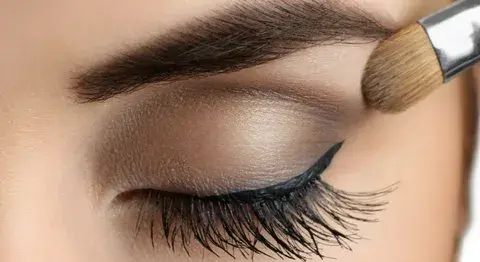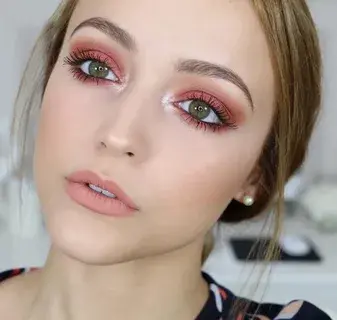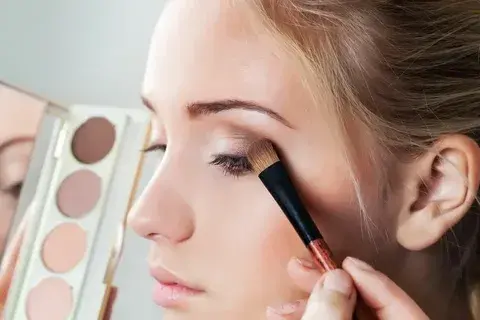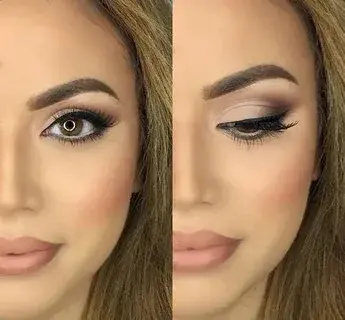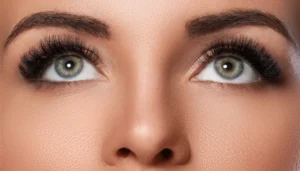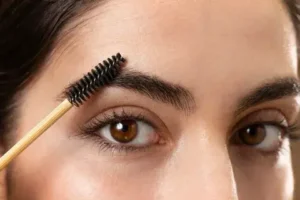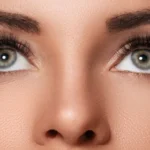The human eye is a truly remarkable feat of nature, a complex and intricate structure that allows us to perceive and interpret the world around us.
In this comprehensive blog post, we’ll delve into the makeup of the eye, exploring its key components and their remarkable functions in-depth.
The Cornea: Protecting the Eye’s Surface
The cornea is the transparent, curved front part of the eye that helps focus light. It acts as the eye’s primary refracting surface, bending light to help it reach the retina at the back of the eye.
The cornea is composed of several layers, including the epithelium, Bowman’s layer, the stroma, Descemet’s membrane, and the endothelium.
Each of these layers plays a crucial role in maintaining the cornea’s transparency, strength, and curvature.
The cornea’s primary function is to protect the eye from harmful elements, serving as the first line of defense against dust, germs, and other environmental factors.
Its curved shape also helps to redirect and focus the light entering the eye, working in tandem with the lens to ensure clear, sharp vision.
The Iris and Pupil: Controlling Light Entry
The iris is the colored part of the eye that surrounds the pupil. It acts as a diaphragm, controlling the amount of light that enters the eye by adjusting the size of the pupil.
When the environment is bright, the iris contracts, making the pupil smaller to reduce the amount of light reaching the retina.
Conversely, in low-light conditions, the iris expands, allowing the pupil to open wider and let in more light.
The pupil is the opening in the center of the iris that allows light to pass through and reach the lens and retina.
The size of the pupil is directly controlled by the muscles within the iris, which respond to changes in light intensity, allowing the eye to adapt to various lighting conditions.
The Lens: Focusing Light onto the Retina
The lens is a transparent, flexible structure located behind the pupil that helps focus light onto the retina.
It works in tandem with the cornea to bend and refract light, ensuring that images are clearly focused on the light-sensitive cells at the back of the eye.
The lens is composed of a series of concentric layers of specialized cells, each containing a high concentration of proteins called crystallins.
These proteins help to maintain the lens’ transparency and flexibility, allowing it to change shape and focus light as needed.
The lens’ ability to change shape, a process known as accommodation, is essential for clear vision at different distances.
By adjusting its curvature, the lens can focus light from near and distant objects onto the retina, enabling us to see clearly at a variety of distances.
The Retina: Converting Light into Electrical Signals
The retina is a thin, light-sensitive layer at the back of the eye that contains specialized cells called photoreceptors.
These photoreceptors, which include rods and cones, convert the light that enters the eye into electrical signals that are then transmitted to the brain via the optic nerve.
Rods are responsible for detecting light and dark, allowing us to see in low-light conditions, while cones are responsible for color vision and fine detail.
The retina also contains other specialized cells, such as bipolar cells and ganglion cells, which help to process and transmit the visual information to the brain.
The retina’s fovea, a small, highly concentrated area of cones, is responsible for our sharpest and most detailed central vision.
The peripheral regions of the retina, with their higher concentration of rods, are responsible for our broader, less detailed peripheral vision.
The Optic Nerve: Transmitting Visual Information to the Brain
The optic nerve is the conduit that carries the electrical signals from the retina’s photoreceptors to the brain, where they are interpreted and processed, allowing us to perceive and understand the world around us.
The optic nerve is composed of more than 1 million individual nerve fibers, each of which carries a specific piece of visual information.
These nerve fibers converge at the back of the eye, forming the optic nerve, which then extends through the skull and into the brain’s visual cortex.
The optic nerve plays a crucial role in visual perception, as it is responsible for transmitting the electrical signals generated by the retina’s photoreceptors to the brain.
Any damage or disruption to the optic nerve can lead to vision problems or even blindness.
The Cornea’s Role in Refracting Light
The cornea’s curved surface acts as the eye’s primary refracting surface, bending light in a way that helps it reach the retina.
This refraction is crucial for clear, focused vision, as it ensures that light is properly directed onto the light-sensitive cells in the back of the eye.
The cornea’s refractive power is determined by its curvature and the difference in the refractive index between the air and the corneal tissue.
By bending and focusing the light entering the eye, the cornea helps to create a clear, sharp image on the retina, which is then processed by the brain to produce our visual perception.
Interestingly, the cornea accounts for approximately two-thirds of the eye’s total refractive power, with the remaining one-third coming from the lens.
This delicate balance between the cornea and lens is essential for maintaining proper focus and clear vision.
How the Iris and Pupil Regulate Light Exposure
The iris and pupil work together to control the amount of light that enters the eye. In bright conditions, the iris contracts, making the pupil smaller, which reduces the amount of light reaching the retina.
Conversely, in low-light situations, the iris expands, allowing the pupil to open wider and let in more light, enabling the eye to function effectively in various lighting conditions.
This ability to adapt to different light levels is crucial for maintaining visual acuity and preventing damage to the light-sensitive cells in the retina.
By regulating the amount of light entering the eye, the iris and pupil help to protect the delicate structures within the eye and ensure that the visual system can operate efficiently in a wide range of lighting conditions.
The size of the pupil is also influenced by other factors, such as emotions, age, and certain medical conditions.
For example, pupils tend to dilate in response to excitement or arousal, and they may become smaller as we age due to the stiffening of the iris muscles.
The Lens’ Ability to Adjust Focus
The eye’s lens is a flexible structure that can change shape to adjust the focus of light on the retina.
This ability, known as accommodation, allows the eye to shift focus between near and distant objects, enabling us to see clearly at a variety of distances.
The lens is composed of a central, transparent core surrounded by concentric layers of specialized cells.
These cells contain a high concentration of proteins called crystallins, which help to maintain the lens’ transparency and flexibility.
When we focus on a nearby object, the ciliary muscles, which are attached to the lens, contract, causing the lens to become more curved and increase its refractive power.
This change in lens shape helps to focus the light from the close-up object onto the retina, allowing us to see it clearly.
Conversely, when we shift our gaze to a distant object, the ciliary muscles relax, causing the lens to become flatter and reduce its refractive power.
This change in lens shape helps to focus the light from the distant object onto the retina, enabling us to see it clearly as well.
The lens’ ability to accommodate, or change shape, is essential for maintaining clear vision at different distances, and it is a key component of the eye’s overall focusing mechanism.
The Retina’s Photoreceptors and Their Visual Processing
The retina’s photoreceptors, rods, and cones, are responsible for converting the light that enters the eye into electrical signals that can be understood by the brain.
Rods are responsible for detecting light and dark, while cones are responsible for color vision and fine detail.
Rods are much more sensitive to light than cones, allowing us to see in low-light conditions. They are distributed throughout the peripheral regions of the retina, providing us with our broader, less detailed peripheral vision.
In contrast, cones are concentrated in the central region of the retina, known as the fovea, giving us our sharpest and most detailed central vision.
The photoreceptors in the retina convert the light they receive into electrical signals by stimulating the photopigments within their cells.
These electrical signals are then transmitted to the bipolar and ganglion cells, which further process the information and send it to the optic nerve for transmission to the brain.
The brain’s visual cortex is responsible for interpreting the electrical signals from the retina, allowing us to perceive and understand the world around us.
This complex interplay of photoreceptors, retinal cells, and the visual cortex enables the eye to transform light into the rich, detailed visual experience we enjoy.
The Optic Nerve’s Vital Link to the Brain
The optic nerve is the crucial link between the eye and the brain, transmitting the electrical signals generated by the retina’s photoreceptors to the visual cortex, where they are interpreted and processed into the images and visual information we perceive.
The optic nerve is composed of more than 1 million individual nerve fibers, each of which carries a specific piece of visual information.
These nerve fibers converge at the back of the eye, forming the optic nerve, which then extends through the skull and into the brain’s visual cortex.
As the optic nerve transmits the electrical signals from the retina, it also carries information about the eye’s position and movements, which is essential for the brain to accurately interpret and process the visual information it receives.
Any damage or disruption to the optic nerve can lead to vision problems or even blindness, as the brain will no longer be able to receive the necessary visual information from the eye.
This is why the optic nerve is such a vital component of the visual system, serving as the crucial link between the eye and the brain.
Common Eye Conditions and Their Impact
Nearsightedness, or myopia, is a common refractive error that occurs when the eye is too long or the cornea is too curved, causing light to focus in front of the retina.
This results in difficulty seeing distant objects clearly, as the light from these objects is not properly focused onto the retina.
Farsightedness, or hyperopia, is the opposite condition, where the eye is too short or the cornea is not curved enough, causing light to focus behind the retina.
This makes it harder to see close-up objects clearly, as the light from these objects is not properly focused onto the retina.
Both myopia and hyperopia can be corrected with the use of eyeglasses, contact lenses, or refractive surgery, such as LASIK, which can reshape the cornea to improve the eye’s focusing ability.
Astigmatism: When the Cornea is Irregularly Shaped
Astigmatism is a condition where the cornea or lens is irregularly shaped, causing light to focus at multiple points on the retina.
This can result in distorted or blurred vision at all distances, as the eye is unable to properly focus the light entering it.
Astigmatism is often present from birth and can be caused by an irregular curvature of the cornea or a misshapen lens.
It can also develop later in life due to changes in the eye’s structure or as a result of certain medical conditions or eye injuries.
Like myopia and hyperopia, astigmatism can be corrected with eyeglasses, contact lenses, or refractive surgery, which aim to restore the eye’s ability to focus light properly onto the retina.
Cataracts: Clouding of the Lens
Cataracts are a common age-related condition where the eye’s lens becomes clouded, reducing light transmission and causing vision to become blurry or hazy.
This condition can be caused by a variety of factors, including aging, exposure to ultraviolet radiation, certain medical conditions, or even genetic factors.
As the lens becomes clouded, it becomes increasingly difficult for light to pass through and reach the retina, resulting in a gradual decline in visual acuity.
Cataracts can also cause increased glare and sensitivity to bright light, making it challenging to perform everyday tasks like driving or reading.
Fortunately, cataracts can be treated through a surgical procedure in which the clouded lens is removed and replaced with an artificial intraocular lens (IOL).
This procedure, known as cataract surgery, is one of the most common and successful surgical procedures performed today, often restoring clear, sharp vision for patients.
Macular Degeneration: Damage to the Retina
Macular degeneration is a leading cause of vision loss in older adults, occurring when the macula, the part of the retina responsible for central, high-resolution vision, becomes damaged.
This can make it difficult to see faces, read, or perform other tasks that require clear, central vision.
There are two main types of macular degeneration: dry macular degeneration and wet macular degeneration.
Dry macular degeneration is the more common form and is characterized by the gradual breakdown of the macula, while wet macular degeneration is caused by the growth of abnormal blood vessels that can leak and damage the macula.
While there is no cure for macular degeneration, there are treatments and lifestyle modifications that can help slow the progression of the disease and preserve remaining vision.
These may include dietary changes, nutritional supplements, and in some cases, medical interventions such as anti-angiogenic drugs or laser therapy.
Glaucoma: Increased Pressure within the Eye
Glaucoma is a group of eye conditions characterized by increased pressure within the eye, which can damage the optic nerve and lead to vision loss if left untreated.
There are several types of glaucoma, including open-angle glaucoma, angle-closure glaucoma, and normal-tension glaucoma, each with its own unique causes and symptoms.
Increased eye pressure can occur when the eye’s drainage system becomes blocked, causing a buildup of fluid and a subsequent rise in intraocular pressure.
This increased pressure can then damage the optic nerve, which is responsible for transmitting visual information to the brain.
Early detection and management of glaucoma are crucial to preserving vision. Treatment options may include eye drops, oral medications, laser therapy, or surgery, depending on the type and severity of the condition.
Regular eye exams are essential for identifying and addressing glaucoma before it can cause significant and irreversible vision loss.
Regular Eye Exams and Monitoring
Regularly scheduled eye exams with an optometrist or ophthalmologist are essential for maintaining good eye health.
These exams can help detect and manage any vision problems or eye conditions early on, before they become more serious.
During a comprehensive eye exam, the eye care professional will assess various aspects of your vision, including visual acuity, refractive errors, eye movement, and overall eye health.
They may also perform tests to check for specific conditions, such as glaucoma or macular degeneration.
By staying on top of your eye health through regular check-ups, you can ensure that any issues are identified and addressed promptly, helping to prevent or slow the progression of vision problems and maintain clear, healthy eyes.
Protecting the Eyes from UV Radiation
Exposure to ultraviolet (UV) radiation from the sun can be harmful to the eyes, increasing the risk of conditions like cataracts and macular degeneration.
Wearing sunglasses or other UV-blocking eyewear can help protect the eyes from this damaging radiation.
When choosing sunglasses, it’s important to look for ones that provide 100% UV protection, blocking both UVA and UVB rays.
Wraparound styles or large, oversized frames can also help to shield the eyes from peripheral light exposure.
In addition to wearing sunglasses, you can also protect your eyes by limiting your time in direct sunlight, especially during the mid-day hours when UV radiation is at its highest.
Wearing a wide-brimmed hat can also provide additional protection for your eyes and the delicate skin around them.
Proper Lighting and Screen Usage
Ensuring proper lighting, both natural and artificial, can help reduce eye strain and fatigue. Adequate lighting, without excessive glare or contrast, can make it easier for the eyes to focus and reduce the risk of headaches or other discomfort.
Additionally, taking regular breaks from digital screens and following the 20-20-20 rule (every 20 minutes, look at something 20 feet away for 20 seconds) can help mitigate the effects of prolonged screen time.
Exposure to blue light emitted by digital devices can contribute to eye strain, so using blue light-filtering glasses or adjusting screen settings can also be beneficial.
Proper lighting and screen management are especially important for individuals who spend a significant portion of their day working on computers or using other digital devices.
By implementing these strategies, you can help to protect your eyes and maintain their health over the long term.
Nutrition and Lifestyle Choices for Eye Health
A healthy diet rich in eye-friendly nutrients like lutein, zeaxanthin, and omega-3 fatty acids can support overall eye health.
These nutrients are believed to play a role in protecting the eyes from damage caused by ultraviolet light, as well as reducing the risk of conditions like macular degeneration and cataracts.
Good sources of these nutrients include leafy green vegetables, citrus fruits, fatty fish, and nuts and seeds. Incorporating these foods into your diet can help to support the health and function of your eyes.
In addition to proper nutrition, maintaining a healthy lifestyle through regular exercise and stress management can also contribute to the well-being of the eyes.
Exercise can improve blood flow and circulation, which can benefit the eyes, while stress management techniques like meditation or deep breathing can help to reduce eye strain and fatigue.
When to Seek Medical Attention for Eye Concerns
If you experience any sudden changes in vision, persistent eye pain, or other concerning symptoms, it’s important to seek medical attention from an eye care professional as soon as possible.
Early intervention can often help prevent or manage more serious eye conditions.
Some signs that warrant a trip to the eye doctor include:
- Sudden vision loss or blurred vision
- Persistent eye pain, redness, or irritation
- Flashes of light or an increase in floaters in the field of vision
- Sudden onset of double vision
- Sudden sensitivity to light or glare
By addressing these issues promptly, you can increase the chances of maintaining good eye health and preventing potentially sight-threatening conditions from progressing.
Don’t hesitate to schedule an appointment with an optometrist or ophthalmologist if you have any concerns about the health of your eyes.
Frequently Asked Question (FAQs)
Q: What is the makeup on your eyes called?
A: Eyeshadow. Eyeliner. Mascara. Eyebrow Pencil.
Q: Is eye makeup important?
A: Creating the perfect eye is key to creating a flawlessly finished face.
Q: Is eye makeup safe?
A: Usually safe when you buy them.
Q: What makes an eye beautiful?
A: Large visible height of the iris and large upward and lateral inclination of both eye axis and eyebrows.
Q: Does Vaseline remove eye makeup?
A: It can pretty much dissolve almost any kind of makeup gently.
Conclusion about eye
From the cornea’s refractive power to the retina’s photoreceptors, each part of the eye plays a crucial role in the visual process.
And when any of these components are compromised, it can lead to a range of vision problems and eye conditions that can significantly impact our quality of life.
Whether it’s regular eye exams, proper nutrition, or simply being mindful of our screen time, investing in the health of our eyes is an investment in our overall well-being and quality of life.
By staying informed and taking the necessary steps to care for our eyes, we can ensure that we can continue to enjoy the rich, detailed visual experience that the human eye is capable of providing.
